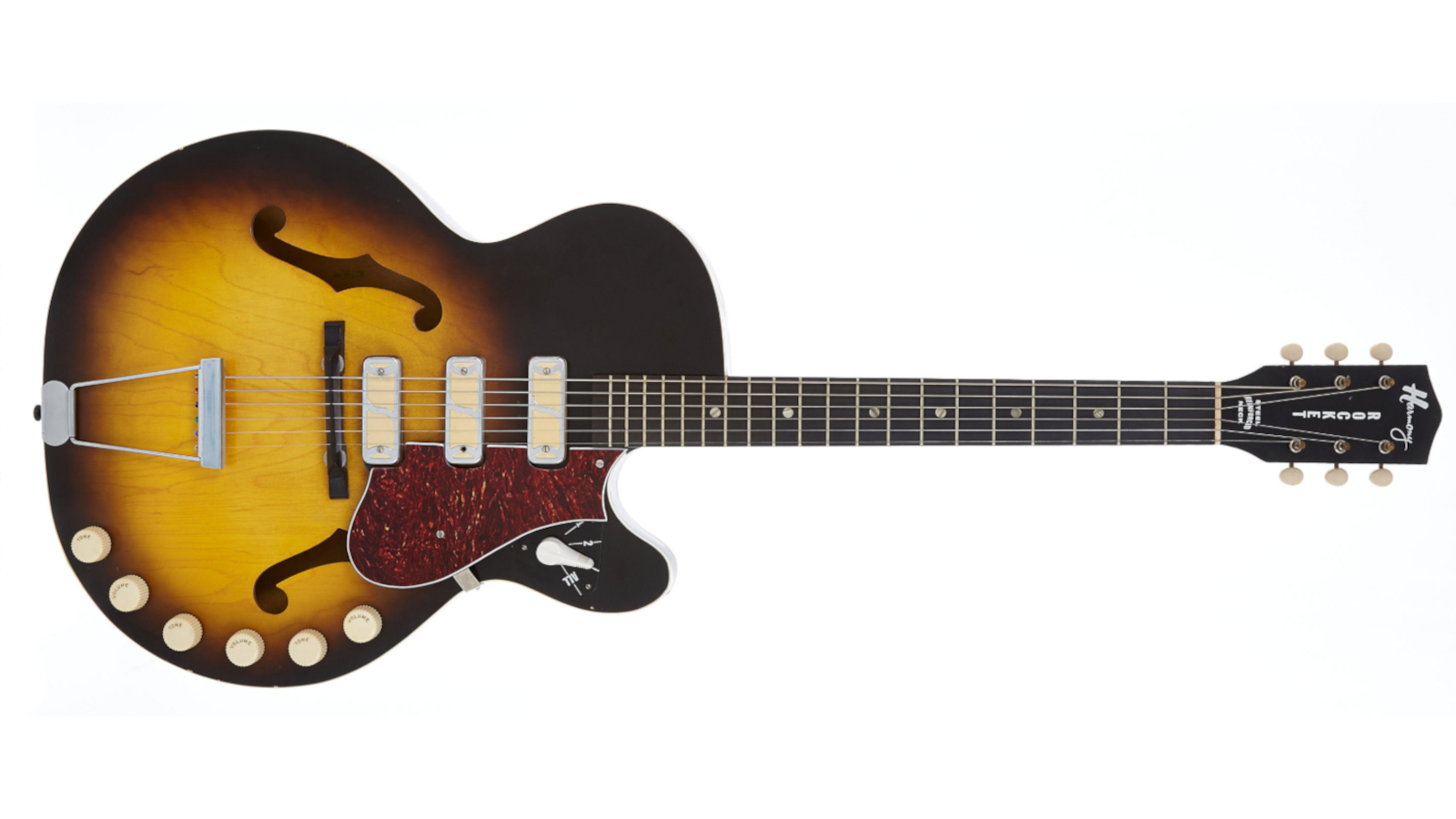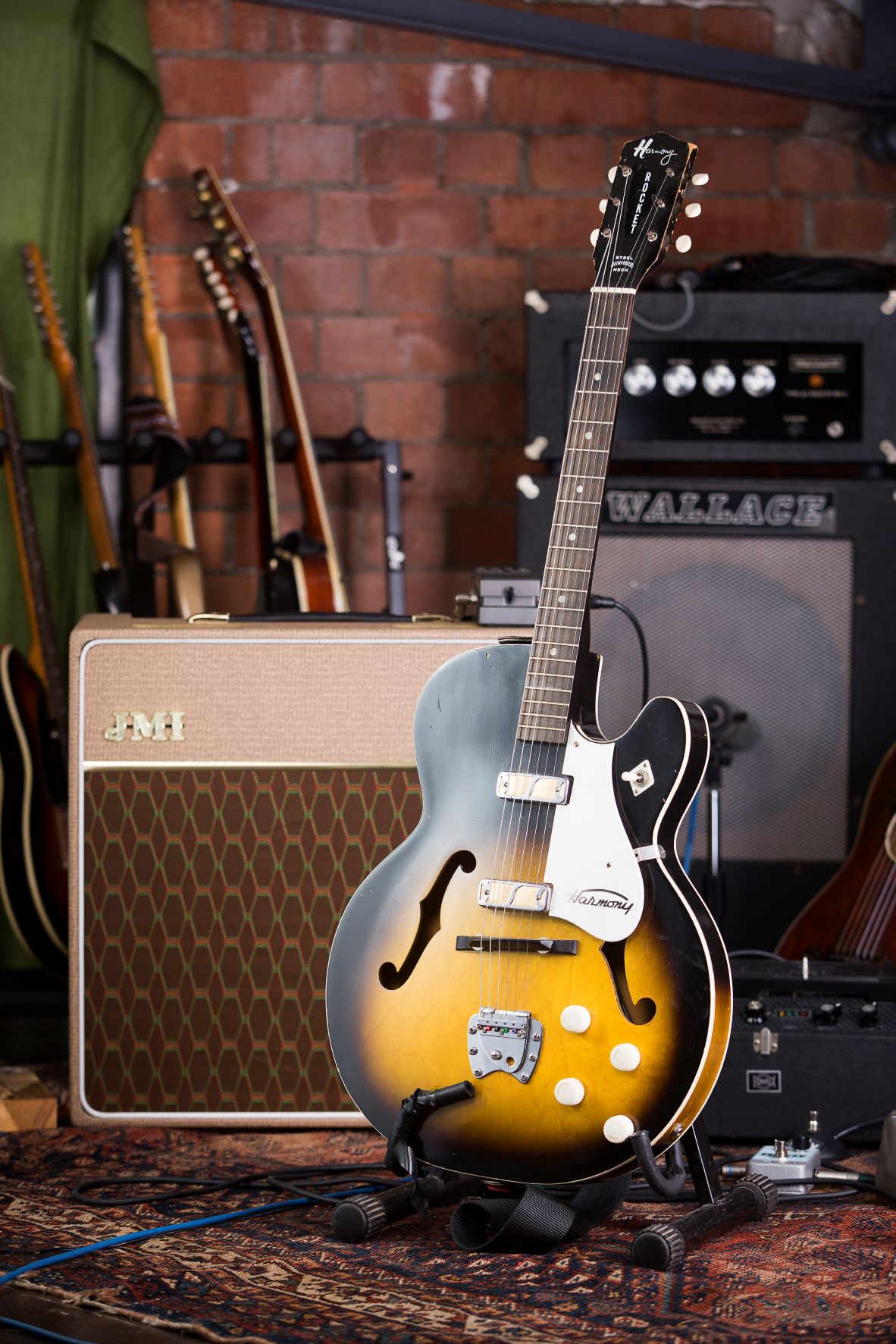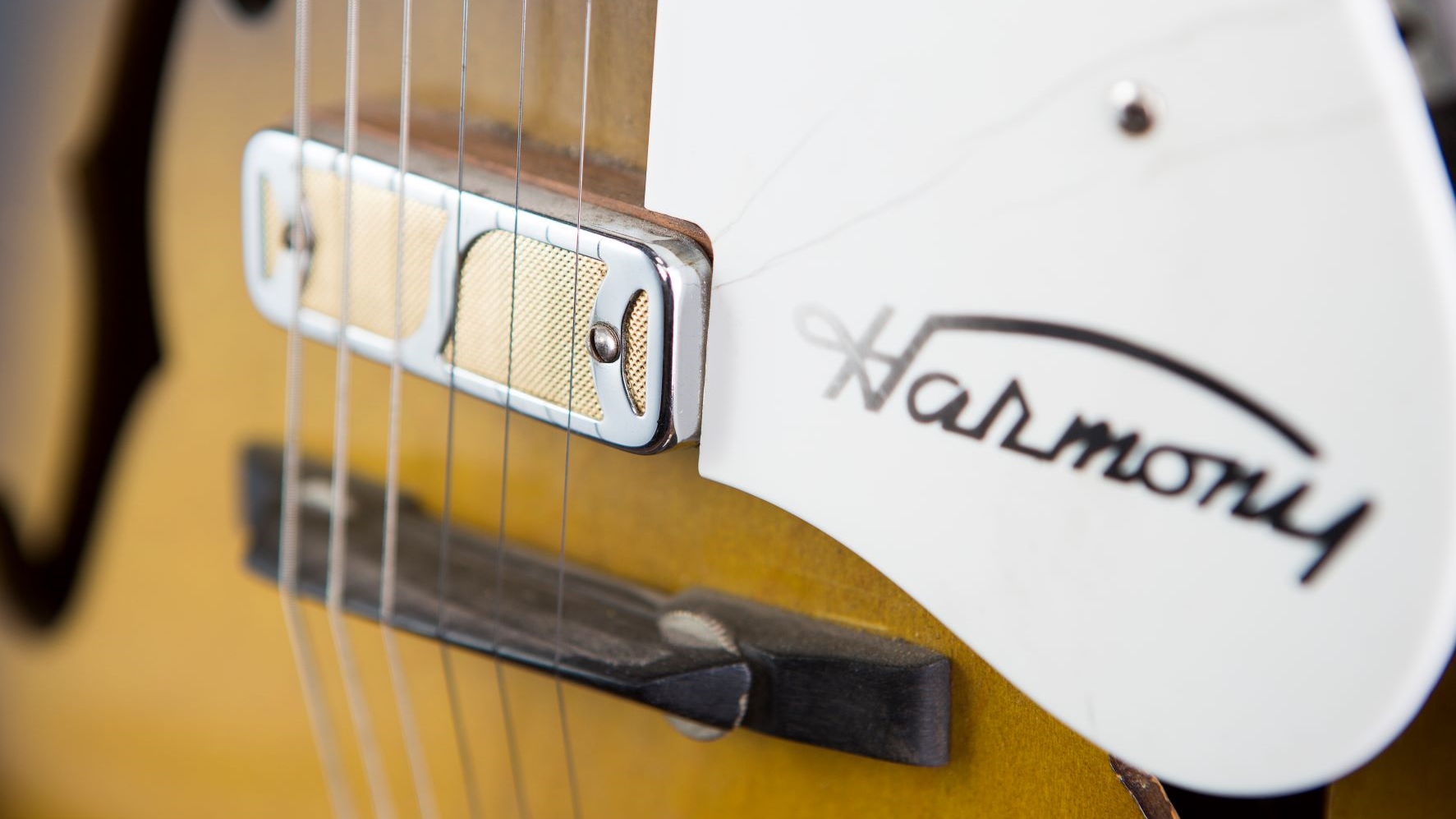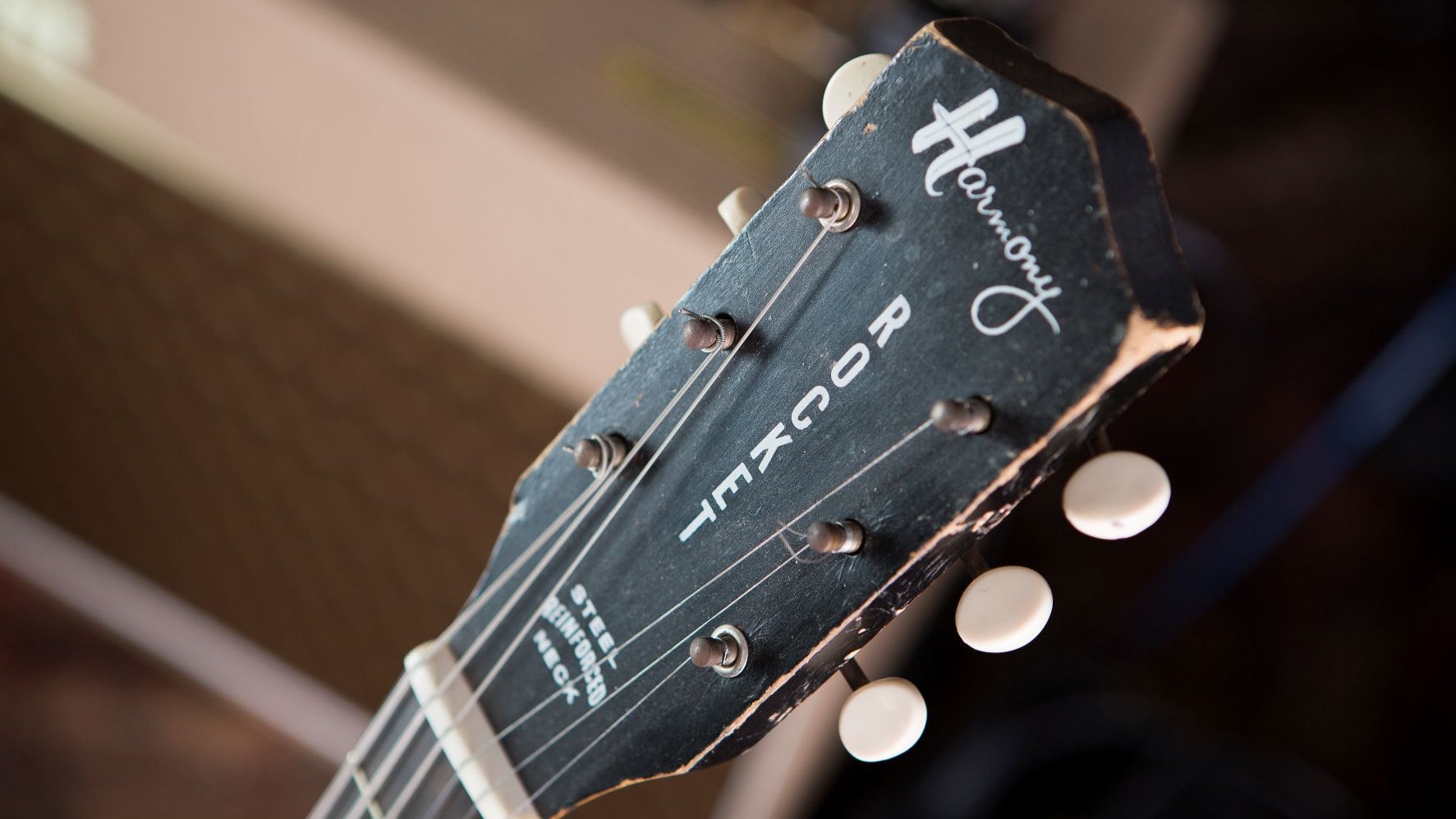Jack White, Dan Auerbach and Many More Have Made Great Use of These DeArmond Gold-Foil-Loaded Classics
As the cornerstone of Harmony’s hollow-body lineup, the Rocket was a soaring success.

There’s no use pretending that all vintage guitars were created equal. The build quality of Gibson and Fender electric guitars of the ’50s and early ’60s is celebrated as the epitome of factory-made achievement in the industry, while instruments by Gretsch, Rickenbacker, Guild and others are generally considered quite good. For pure sonic mojo and funky alternative-tone high jinks, though, there are plenty of others worth exploring, and several Harmony models and their brethren are likely at the top of that heap.
Most players today will know of Harmony as the long-running bargain brand amid U.S.-made electric guitars of the golden age. Many, however, are unlikely to be fully aware of the company’s historic place within the industry.
For a time in the early and middle parts of the 20th century, Harmony was one of the largest manufacturers of musical instruments in the world, and the company’s roots extend back to the close of the previous century, having been launched two years before Gibson itself was officially established.
German immigrant Wilhelm J.F. Schultz founded the company in Chicago in 1892, and just 10 years later Harmony was the largest supplier of Supertone-labeled guitars to retailing giant Sears Roebuck, a perpetual force in the dissemination of the humble guitar through the United States (the retailer bought the Harmony company in 1916 and owned it until 1940).

Though never quite top of the industry in terms of quality, Harmony instruments were well-built and generally functional. As such, they were the choice of many hard-working pros over the years. They were also snatched up by beginner and intermediate players, often under the brand name Silvertone, which represented all things music-related for Sears by the 1940s. Not all Silvertones were Harmony-made, however, and the newly independent company also sold its guitars through other stores and distributors.
While the guitars were rarely made from premium woods, and the hardware and setups sometimes made them clunky to play, many Harmony instruments benefited from the inclusion of great DeArmond-made pickups, particularly the varieties of gold-foil pickups that appeared on the Rocket and its archtop and thinline brethren of the late ’50s and ’60s. The cornerstone of the hollow-body lineup, the single-cutaway Rocket was made between 1959 and 1967, when it transmuted into a double-cutaway body, and soon after went off the rails, along with many other Harmonies in the company’s declining years.
Rocket models H53, H54 and H59 had one, two, and three pickups, respectively, while the two-pickup H56 also included a vibrato tailpiece, but the precise specs and components changed through the years, too. From their arrival until around 1964-’65, Harmony Rockets carried the simple Rowe-DeArmond gold-foil S-cover pickups, so-called due to the stylized “S” shape at the center of their chromed outer cover, with an exposed gold-colored insert and no pole pieces.
Get The Pick Newsletter
All the latest guitar news, interviews, lessons, reviews, deals and more, direct to your inbox!
As detailed in this article these are great-sounding pickups with a juicy, rich tone, good clarity, excellent dynamics, and a decent amount of output to push a tube amp at the edge of breakup. After that, the guitar carried DeArmond gold-foil “mustache” pickups, with a row of adjustable pole pieces at their center and mustache-shaped cutouts in their chrome covers, with red-foil inserts underneath. These have a little less output than the preceding units, but they sound good and remain highly revered.

Other than the DeArmonds, a feature that jumps out on the three-pickup H59 in particular is the imposing arc of six control knobs that followed the treble-side edge of the guitar’s lower bout, comprising one volume and tone for each pickup. The selector switch on this model was also quite imposing: a large, white chicken-head knob on the horn with positions for each pickup individually and all together. The H54 and H56 carried a traditional three-way toggle selector.
The Rocket’s body was crafted from laminated maple, with a bolt-on neck that carried a fingerboard made from some unidentifiable brown wood that was in fact not rosewood, Brazilian or otherwise. Atop this, the thin frets were often somewhat indifferently dressed, too. For the first several years of production, these necks had steel reinforcement rails rather than adjustable truss rods, which were added around the time of the change to mustache pickups. A floating two-piece bridge with wooden saddle, basic trapeze tailpiece and budget three-on-a-plate tuners round out the features.

For all the underwhelming specs, a Harmony Rocket in good condition can sound utterly badass when played with some attitude. The construction and hardware complement elicit a characterful blend of jangle and fatness, which the lustworthy gold-foil pickups translate to anything from thick, buoyant cleans to gritty overdrive, depending on your amp and pedals of choice.
These guitars don’t deliver much in the resonance and sustain department, but they kick out a good amount of compression and a surprisingly sweet, toothsome harmonic shimmer when you dig in and push those gold foils hard. Plenty of serious players have made the Rocket a secret weapon amid all the usual suspects in the pro-guitar arsenal.
Dan Auerbach’s use of Rockets and their brethren with the Black Keys provides an excellent example of what these guitars can do, and Jack White occasionally swapped his Airline for a Rocket during his time with the White Stripes. Otherwise, countless blues guitar players cut their teeth – and often, made their living – on similar Harmony guitars, drawn by their relatively affordable prices.
Speaking of which, these prices have been driven up on the vintage market in recent years thanks to the above-named associations and others, but an original Rocket, Meteor or other thinline Harmony still won’t break the bank the way a vintage A-list make and model will, and sharp eyes will occasionally spot some real bargains.
Otherwise, the new owner of the Harmony brand – BandLab Technologies, which also owns Heritage Guitars, Mono Cases, Teisco and other brands – has introduced the U.S.-made semi-hollow Comet and reissued three domestically produced solidbody electrics that capture the image of the nonhollow originals, if not the precise makeup of the original Rowe-DeArmond-made pickups.
Essential Ingredients
- Hollow thinline body > Constructed with laminated maple
- Single-cutaway from 1959-’67
- Bolt-on neck
- One, two or three DeArmond gold-foil pickups
- Optional vibrato (on the two-pickup H56 model only)
Dave Hunter is a writer and consulting editor for Guitar Player magazine. His prolific output as author includes Fender 75 Years, The Guitar Amp Handbook, The British Amp Invasion, Ultimate Star Guitars, Guitar Effects Pedals, The Guitar Pickup Handbook, The Fender Telecaster and several other titles. Hunter is a former editor of The Guitar Magazine (UK), and a contributor to Vintage Guitar, Premier Guitar, The Connoisseur and other publications. A contributing essayist to the United States Library of Congress National Recording Preservation Board’s Permanent Archive, he lives in Kittery, ME, with his wife and their two children and fronts the bands A Different Engine and The Stereo Field.
Guitar Center's Guitar-A-Thon is back, and it includes a colossal $600 off a Gibson Les Paul, $180 off a Fender Strat, and a slew of new exclusive models
"We tried every guitar for weeks, and nothing would fit. And then, one day, we pulled this out." Mike Campbell on his "Red Dog" Telecaster, the guitar behind Tom Petty & the Heartbreakers' "Refugee" and the focus of two new Fender tribute models










